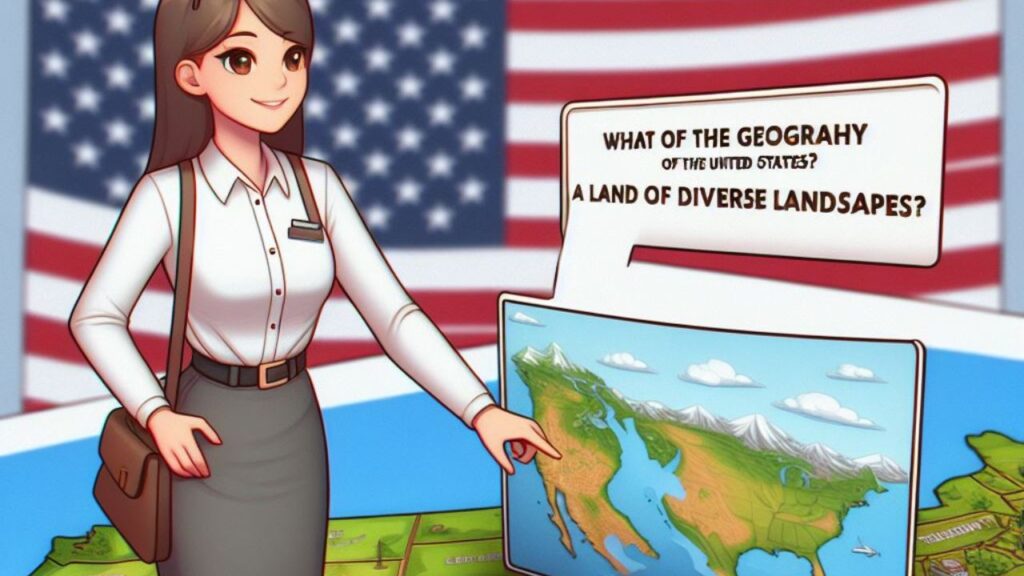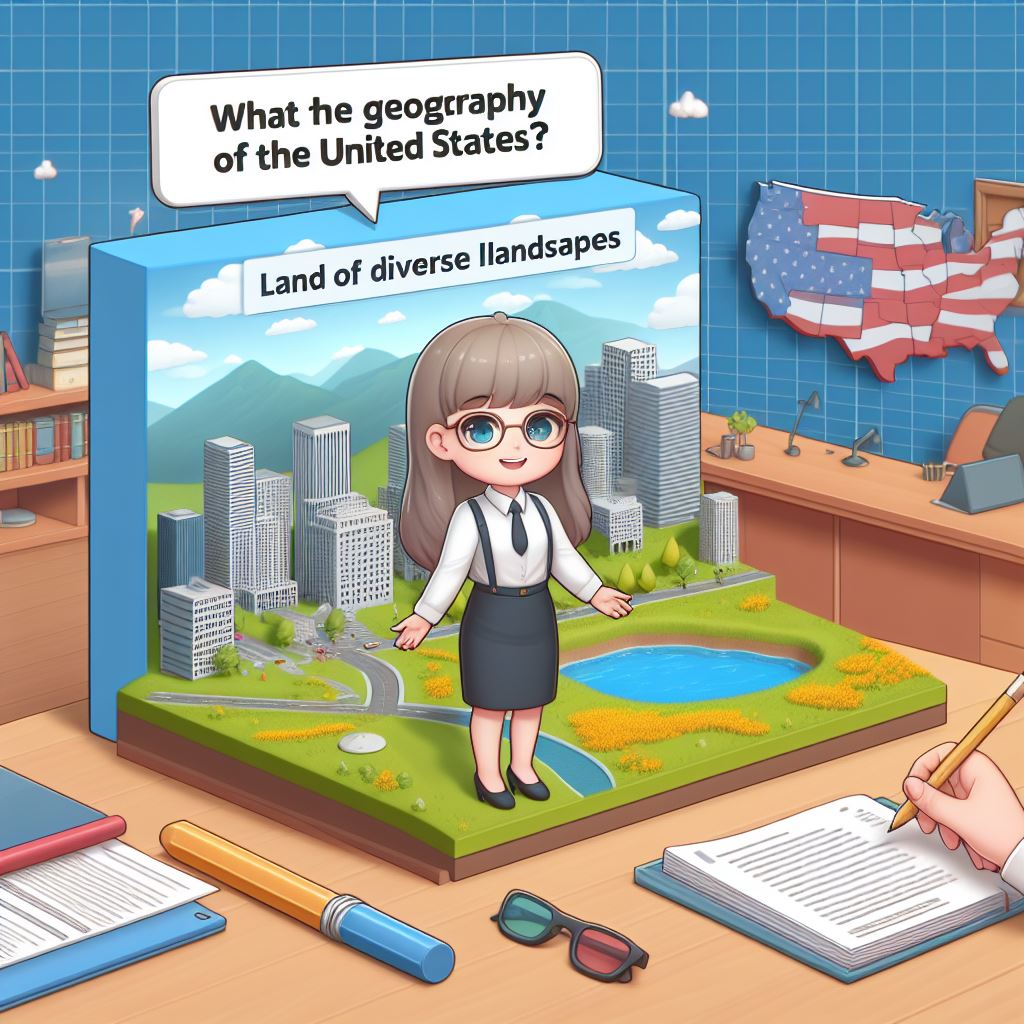
How Can We Use Computers? A Beginner’s Guide to Unlocking a Digital World
What is the Average Cost of an EV Car in the US? | 0298
The US of America flaunts a tremendous and unbelievably different geology. Crossing over 3.8 million square miles, it’s the third-biggest nation on Earth via land region. This colossal size converts into a shocking cluster of scenes, from transcending mountain reaches to rambling fields, flickering shorelines, and, surprisingly, volcanic archipelagos.
Understanding American geology is vital to valuing the country’s rich biological systems, environments, and the exceptional person of its various locales.
Borders and Landforms: A Country Characterized by Its Geology
The mainland US sits settled between Canada toward the north and Mexico toward the south. Its eastern and western flanks are washed by the Atlantic and Pacific Seas, individually. Strangely, The Frozen North, an isolates state, shares a sea line with Russia in the northwest.
We should dive into the major landforms that characterize the American scene:
- Eastern Uplands and the Appalachian Mountains: The eastern seaboard is portrayed by moving slopes and low-lying mountains. The Appalachian Mountains, a chain extending from northern Alabama to Canada, rule this district. While not especially high, these old mountains offer beautiful excellence and harbor significant normal assets.
- The Incomparable Plains: This immense, level breadth extends from the Mississippi Stream to the Rough Mountains. When an ocean of grass, the Incomparable Fields are presently imperative rural land, delivering a huge piece of the country’s food supply.
- The Rough Mountains: This imposing mountain range, running north to south along the western inside, shapes the “mainland spine” of North America. The Rockies brag emotional pinnacles, remembering the most noteworthy point for the adjoining US, Mount Elbert in Colorado.
- The Colorado Plateau: Settled between the Rough Mountains and the Incomparable Bowl, this high, bone-dry area is known for its sensational gulches, including the striking Fantastic Ravine.
- The Incomparable Bowl and Deserts: West of the Rockies lies a tremendous bone-dry district enveloping the Incomparable Bowl and a few deserts, including the Mojave Desert and Passing Valley, the absolute bottom in North America.
- The Pacific Coast Ranges: Lining the Pacific Sea, this chain of mountains includes a wetter environment and lavish woods contrasted with the drier locales toward the east.
- Alaska: America’s 49th state is a place where there is limits. It flaunts Denali, the most elevated mountain top in North America, tremendous glacial masses, rambling tundra, and transcending mountain ranges like the Gold country Reach.
- Hawaii: This island chain, geologically isolated from the central area, is a volcanic heaven. Dynamic volcanoes, sensational shores, and rich rainforests establish a one of a kind tropical climate.

An Embroidery of Environments: From Cold Tundra to Tropical Heaven
The US encounters a noteworthy scope of environments because of its tremendous size and differed geology. Here is a brief look into the climatic variety:
- Eastern Uplands: This locale partakes in a damp mainland environment with sweltering, sticky summers and cool, blanketed winters.
- The Incomparable Plains: This region encounters a mainland environment with blistering summers and cool, dry winters.
- The Rough Mountains: With height comes an adjustment of environment. The Rockies have lower temperatures all year, with critical snowfall in the colder time of year.
- The Colorado Plateau: This high desert district is hot and dry consistently.
- The Incomparable Bowl and Deserts: These regions experience a bone-dry environment with searing summers and gentle winters. Precipitation is scant and eccentric.
- The Pacific Coast Ranges: This district benefits from a Mediterranean environment with gentle, wet winters and warm, dry summers.
- Alaska: Gold country flaunts a polar environment in the north, with long, chilly winters and short, cool summers. The southern locales have a subarctic environment with milder winters.
- Hawaii: This tropical heaven appreciates warm temperatures all year with bountiful precipitation.
A Country of Streams and Streams: The Soul of the Land
The US is honored with a broad organization of streams and streams that play had an essential impact in molding its set of experiences, economy, and biology. Here are the absolute generally unmistakable:
- The Mississippi-Missouri Stream System: This monstrous waterway framework is the soul of North America. It depletes an immense region of the focal US and conveys a critical part of the country’s rural items to the ocean.
- The Colorado River: This famous stream cuts its direction through the bone-dry Southwest, cutting out the Stupendous Gulch and giving water to a great many individuals.
- The Incomparable Lakes: These five freshwater lakes, lining Canada, structure the biggest freshwater framework on Earth by surface region. They give urgent transportation courses and drinking water for millions.
- Seaside Waterways: The broad shores of the US are dabbed with narrows, estuaries, and harbors that have been focuses of business and transportation for a really long time.
Past the Land: Investigating America’s Normal Assets
The different geology of the US converts into an abundance of regular assets that have been instrumental in molding the country’s turn of events and economy. Here are a few secret weapons:
- Forests: From the rambling coniferous backwoods of the Pacific Northwest to the deciduous woodlands of the East Coast, American woodlands give lumber, pulpwood, and environment for a huge range of natural life.
- Minerals: The US is plentiful in various minerals, including coal, iron metal, copper, and uncommon earth components. These assets have filled modern development and keep on assuming an imperative part in the cutting edge economy.
- Fossil Fuels: Oil, flammable gas, and coal are plentiful in different locales, especially the Incomparable Fields and portions of The Frozen North. Nonetheless, worries about environmental change are pushing the investigation of elective energy sources.
- Freshwater: While unevenly dispersed, freshwater assets are critical for horticulture, industry, and human utilization. The Incomparable Lakes framework, significant waterways, and huge underground springs give a critical piece of the country’s freshwater needs.
- Arable Land: The prolific fields of the Midwest and California’s Focal Valley are prime rural terrains, making the US a main maker of food crops.
- Marine Resources: The broad shores give admittance to an abundance of fisheries, with assets going from cod and salmon in the north to fish and shrimp in the south.

The Effect of Topography on American Life
The topography of the US has significantly molded the manner in which Americans live, work, and collaborate with their current circumstance. Here are a few key perspectives:
- Settlement Patterns: Early settlements grouped along the Atlantic coast because of simplicity of transportation and admittance to assets. As the country extended toward the west, topography assumed a huge part in deciding settlement designs, with prolific fields drawing in ranchers and mountain ranges presenting normal obstructions.
- Monetary Development: The dispersion of regular assets vigorously affected the improvement of various districts. Modern focuses arose close to coal and press mineral stores, while prolific fields became horticultural forces to be reckoned with. Seaside urban areas thrived because of exchange and transportation benefits.
- Transportation and Infrastructure: The huge size and changed geography of the US required the improvement of a perplexing transportation organization. Streams, channels, and at last railways worked with the development of merchandise and individuals across the landmass. Today, a broad roadway framework and an organization of air terminals interface the country’s different locales.
- Culture and Identity: The territorial varieties in topography have encouraged unmistakable societies and characters inside the US. From the rancher culture of the Incomparable Fields to the fishing networks of the New Britain coast, the land has molded traditions, customs, and even cooking.
Protection and Supportability: Difficulties and Valuable open doors
The tremendous normal assets of the US have gone under expanding tension because of populace development, modern turn of events, and impractical practices. Preservation endeavors are vital to guarantee the drawn out practicality of these assets. Here are a few vital difficulties and open doors:
- Safeguarding Ecosystems: Environment misfortune, contamination, and environmental change compromise the sensitive equilibrium of American biological systems. Public parks, untamed life shelters, and preservation programs assume an imperative part in safeguarding imperiled species and saving regular territories.
- Feasible Asset Management: Adjusting the utilization of regular assets for financial improvement with the requirement for preservation is a steady test. Supportable practices in ranger service, agribusiness, and energy creation are pivotal for people in the future.
- Environment Change: The effects of environmental change, for example, rising ocean levels, outrageous climate occasions, and changes in precipitation designs, represent a critical danger to American geology. Transformation and moderation procedures are fundamental for address these difficulties.

Conclusion
The geology of the US is an embroidery woven from mountains, fields, deserts, woodlands, and streams. This massive variety has formed the country’s set of experiences, economy, and culture. Understanding American geology is vital to valuing the country’s interesting person and the mind boggling connection between its kin and the land.
As the country wrestles with natural difficulties, a more profound appreciation for its topography turns out to be considerably more basic in guaranteeing an economical future.
